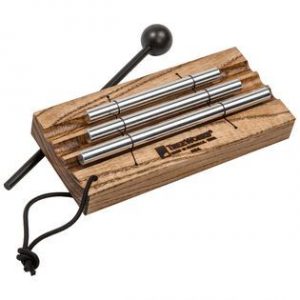
Make Routines Sing! : Using Music in Classroom Management
“Music is the tool to express life – and that makes all the difference” said local Chicago-born Herbie Hancock. If music is a tool then how can you use it to help you in the classroom? There are a lot of tips out there about management, but here are some unique ones that let music do the talking! Here are 5 helpful strategies I’ve found to be effective in my own classroom.
Routine and classroom management are the gears that help move instruction forward, but just the cogs in a machine they can wear down and become ineffective. We’ve all had a frustrating day (or week) when our voices are hoarse and we’re at our wit’s end. When routines become tired and overused, they lose their effectiveness. Give your stale old routines a “tune-up” by adding a little music to them. Here are 5 ways that I’ve effectively used music in managing my classroom.
 1)Musical Cues
1)Musical Cues
We all have cues in our classroom, some are verbal, some are visual, and some could be music based. A popular ones like “class class” (yes yes) and other verbal cues can eventually wear down your voice. So let music do the talking for you and replace them with a different sound. A simple bell or chime bar could become your new signal. Your voice can sometimes become lost in a noisy classroom, whereas as the thin high pitch of a bell can cut right through the chatter. I’ve seen teachers use server bells (ding!) and even had a co-worker borrow a triangle to use in her class. The trick here is to have the musical cue be VERY specific ie. this sound is specifically for clean-up. If you overuse your cue it will lose its clarity and effectiveness.
2)Make Routines Sing!
If a simple musical cue doesn’t cut it, try dedicating an entire song to a routine! You see this most commonly in kindergarten classrooms where the students sing and march into line. A great example is this Come to the Carpet song, but there are tons of free examples out there, or just use the classic Dr. Jean’s “Everybody have a seat, have a seat, have a seat, Everybody have a seat on the floor. Not on the ceiling! Not on the door! Everybody have a seat on the floor!” Teaching a song to kids can be daunting but often it helps to make a tedious transition fun. If you don’t feel like singing often just playing the song from your computer can be equally effective, just don’t stop your kids from singing along!
3)Set the Tone with a Tune
Music is a powerful tool. Movies and TV shows use it effectively to put viewers in suspense or make them swell with joy. If it’s good enough for Hollywood than it’s good enough for your students. There are several times I can think of where having that perfect song ready to go can really impact the mood of the classroom and help shape the spirit of the lesson. A perfect time is before the school day even starts, have a calming track playing as the students enter the room and get settled in for the day. I have a few favorites of varying lengths (here, here, & here) but you should have no trouble finding that calming track to help ease the transition at the start of the day. You can repeat this same strategy during study hall or free reading time later in the day. Another powerful way to use music for setting the tone is when introducing a new topic. May is Asian-American Heritage Month, so why not use some authentic sources and have a cool Japanese drum beat, Maori Haka, or a modern take on classical Indian music playing as you introduce the topic. Music can help you establish the tone of the type of lesson it’s going to be, and with so many choice out there it’s easy to do!
4)Softer than the Song
When students break off into project groups to work, it always starts quiet but ends up noisy. Anytime you let students talk, even at a low volume, it’s just a matter of time until they become too loud. Consider playing a song softly in the background with the explicit purpose of keeping students’ voices down. “If you’re louder than the music you’re too loud, you must be softer than that song” It’s a great reference point for you to refer back to so you can correct students while being consistent and fair at the same time.
5)Echo Expectations (Call & Response)
The classic Call and Response, or Repeat After Me song. This trick is in every camp counselor’s bag and should be in every teacher’s classroom! Adding even the slightest musical tone to a basic “I say, you say” can help liven it up and make it more engaging. You can even use songs of this style for morning community meetings. Remember there is more to music than singing! Have students clap a rhythm and have the rest of the community circle repeat it. Another effective way to use rhythm and responses is simply clapping the syllables of a word as you say it. An example would be using the rhythm from BINGO (was his nameo) except saying and clapping “come to the carpet.” They’re both 5 syllables, except adding a basic rhythm to the expectation can help both grab students attention and keep them engaged.
Hopefully these simple tips can help liven up transitions your classroom. I know you want to have them established early, but sometimes even the best routines can wear down later in the year. Set the tone and give your classroom a tune up by incorporating music into your routines.